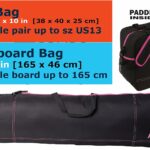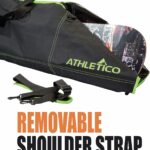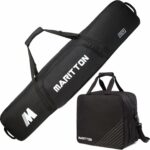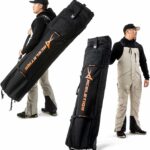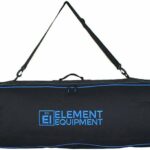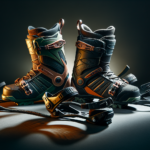If you’re in the market for new snowboarding gear, one question probably crosses your mind: “Do Snowboard Boots and Bindings Need to Match?” You’ll find the answer to this and more as you navigate through the world of snowboarding equipment. The article will help you understand the relationship between boots and bindings, their compatibility, and the potential impact on your overall performance on the slopes. It’s time to make sure you’re fully equipped for your snowy adventure and this piece will guide you right.
Understanding the Importance of Snowboard Boots and Bindings
For novice snowboarders, your boots and bindings may seem like mere accessories, but seasoned snowboarders know better. The right boots and bindings are fundamental to not only your comfort but also your performance on the slopes.
The role of snowboard boots
Snowboard boots are a prevailing factor in your snowboarding adventure, they get your feet and legs involved in controlling your board. Good snowboard boots transmit your motion effectively onto the snowboard, allowing you to steer it with precision. Beyond functionality, boots keep your feet warm, comfortable, and protected throughout your ride.
The function of snowboard bindings
On the other hand, snowboard bindings hold your boots securely onto the snowboard. They should be easy to fasten and unfasten, providing absolute stability and control during your ride. The sturdiness of the bindings affects your ability to control your direction and speed.
Why boots and bindings matter
Boots and bindings are important because they connect you, the rider, to your snowboard. This connection is what helps transmit your movements directly onto the board. It’s necessary to have boots and bindings that match perfectly for you to have maximum control and performance.
The Compatibility between Snowboard Boots and Bindings
In order for boots and bindings to work harmoniously, they need to be compatible. The compatibility depends on several factors such as brand, size, and gender-specific designs.
Brand compatibility
While generic bindings can hold any type and brand of boot, some brands design their boots and bindings to be used as a system providing an optimal performance match. It’s worth noting if your boots and bindings are from the same brand or different brands before making your buying decision.
Size compatibility
This might seem obvious, but many snowboarders often overlook it: your boots must fit well into your bindings. The bindings should hold your boot firmly without any loose space, yet not too tightly to hamper the comfort or restrict movements.
Gender-specific compatibility
Just like the rest of the snowboarding equipment, the boots and bindings are often gender-specific. Women’s boots and bindings are generally narrower and smaller to cater to the anatomy of women’s feet and physique. So, make sure your boots and bindings are designed for your gender to optimize comfort and performance.
Role of Boot and Binding Sizes
Paying attention to the size of boots and bindings is imperative for your snowboarding experience.
How to measure your boot size
Determining your snowboard boot size is quite similar to determining your normal shoe size. Your boot should feel snug and hold your foot securely, without causing discomfort or impeding blood circulation.
Matching your boot size with binding size
The size of your bindings should match your boot size. Manufacturers generally provide a size chart that correlates boot sizes to binding sizes. Overly large or small bindings may cause poor control, decreased performance, or even accidents.
Issues caused by incompatible boots and bindings sizes
A mismatch between boot and binding size can result in a number of issues. Too large bindings may lead to lack of control, while too small bindings can restrict mobility or cause discomfort. When bindings do not fit well, they can cause the boots to shift, which distorts your balance.
Snowboard Boots and Bindings for Different Skill Levels
Choosing the right boots and bindings isn’t a one size fits all decision. Your skill level is a major factor to consider.
Boots and bindings for beginners
If you’re a beginner, the prime consideration should be comfort. This will lessen initial discomfort while learning. Look for softer boots and bindings as they offer forgiving flexibility and a more comfortable ride.
Options for intermediate riders
For intermediate riders, a medium flex boot and binding would be appropriate. The additional responsiveness and support help to transfer energy quickly without sacrificing too much comfort.
Advanced snowboard equipment
Advanced snowboarders would prefer a stiffer boot and binding combo to allow for more aggressive riding and sharper control. However, remember that stiff boots can cause discomfort if worn for an extended period.
Types of Snowboard Bindings and their Compatible Boots
Just like snowboard boots, bindings come in various styles. With the most common being strap-in bindings, rear-entry bindings, and step-in bindings.
Strap-in bindings
Strap-in bindings are the most conventional bindings and they offer a super secure attachment to your board. They are typically used with regular snowboard boots.
Rear-entry bindings
Rear-entry bindings are known for ease of use. With a hinged high-back, they allow for you to slide your boot in and out easily without consistently adjusting straps.
Step-in bindings
Step-in bindings, these are designed for use with step-in boots for automatic secure attachment and easy release. This is especially ideal for extreme conditions where manual strapping might be difficult.
How Riding Styles Influence Boot and Binding Match
Your riding style has a significant influence on the type of boots and bindings that fit you best.
Freestyle riding
If you’re into freestyle riding and stunts, choose softer boots and bindings. These offer the flexibility needed for performing tricks and jumps.
Freeride snowboarding
Freeriding is all about control and fast responses. Stiffer boots and bindings offer the precision and support you need under variable conditions and terrain.
All-mountain snowboarding
For all-mountain riders, a medium flex boot and binding combination is ideal. It provides a balanced mix of control, flexibility, and comfort fitting an all-terrain ride.
Snowboard Boot Flex and Binding Compatibility
The flex rating of boots and bindings plays a significant part in their compatibility.
Understanding boot flex
Boot flex refers to how much a boot gives way or bends when pressure is applied to it. There are three types of flex: soft, medium, and stiff.
How boot flex can affect binding compatibility
The flex of your boot should match the flex of your binding. If your bindings are stiffer than your boots then your boots might wear out quicker. Meanwhile, if your boots are stiffer than your bindings, you might not have the necessary responsiveness or control.
Choosing the right flex for your bindings
Choose a binding that is compatible with your boot flex. This ensures that the energy that you exert through your legs and feet is effectively transferred to your board.
Maintaining Your Snowboard Boots and Bindings
Proper care and maintenance extend the lifespan of your boots and bindings, saving you money in the long run.
Routine checks for boot and bindings compatibility
Keep an eye on the fit of your boots in your bindings. Wear and tear can gradually create discrepancies that affect how well your boot fits into your binding.
Addressing wear and tear
Regular cleaning, drying and repair of minor issues can keep both boots and bindings in good condition, functioning optimally for longer.
When to consider getting new boots or bindings
It is time to get new boots or bindings when they are worn out, have been outgrown, or no longer fit you properly, or meet your demands.
Common Myths about Snowboard Bindings and Boots
There are a few misconceptions about snowboard boots and bindings out there.
‘One size fits all’ misconception
All snowboard boots and bindings do not fit everyone. Like shoes, boots and bindings come in different sizes and it is crucial to choose them as per your fit.
Assumption that all brands are compatible
Not all brands of boots and bindings are interchangeably compatible. Some are specifically designed to work together for maximum performance.
False belief that boots and bindings don’t affect performance
Boots and bindings have a significant impact on your performance, comfort, and safety. Using the appropriate ones will definitely enhance your snowboarding experience.
Obtaining Professional Advice on Boot and Binding Match
Professional advice can be invaluable in ensuring the perfect match between your boots and bindings.
Getting a professional fitting
An experienced boot fitter can help you pick the right boots and check their compatibility with your bindings.
Finding a reliable snowboard shop
A good snowboard shop can offer a wide variety of brands and styles along with knowledgeable advice about what will work best for you.
Speaking to experienced snowboarders
Experienced snowboarders can provide first-hand testimonials about their favorite boots and bindings and how they perform under real-world conditions. They’ll surely have plenty of tips to offer from their experiences.
In conclusion, compatible boots and bindings play a critical role in a safe, comfortable, and high-performance snowboarding experience. When chosen wisely, they turn your snowboarding endeavours into a truly exhilarating journey down those snowy slopes.
- What Snowboard Bindings Should I Get? - January 23, 2024
- What Size Screws For Snowboard Bindings? - January 23, 2024
- How To Snowmobile On Water? - January 23, 2024

